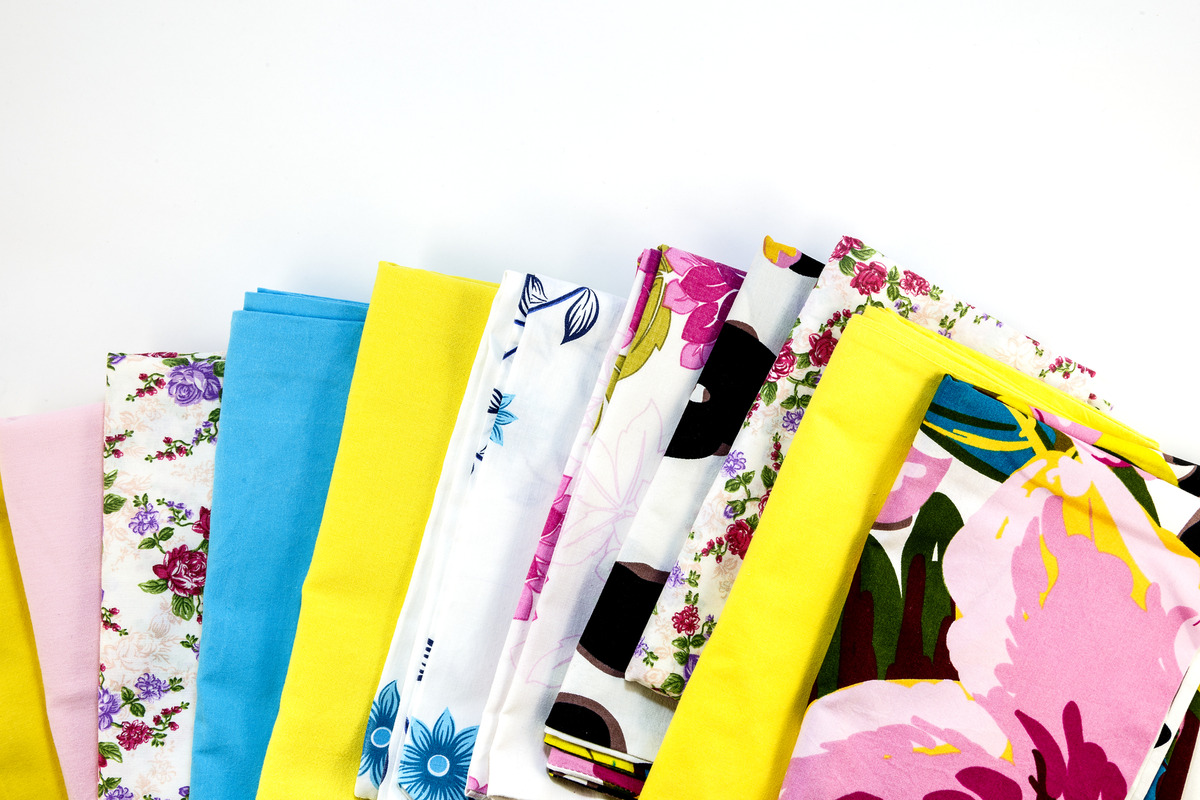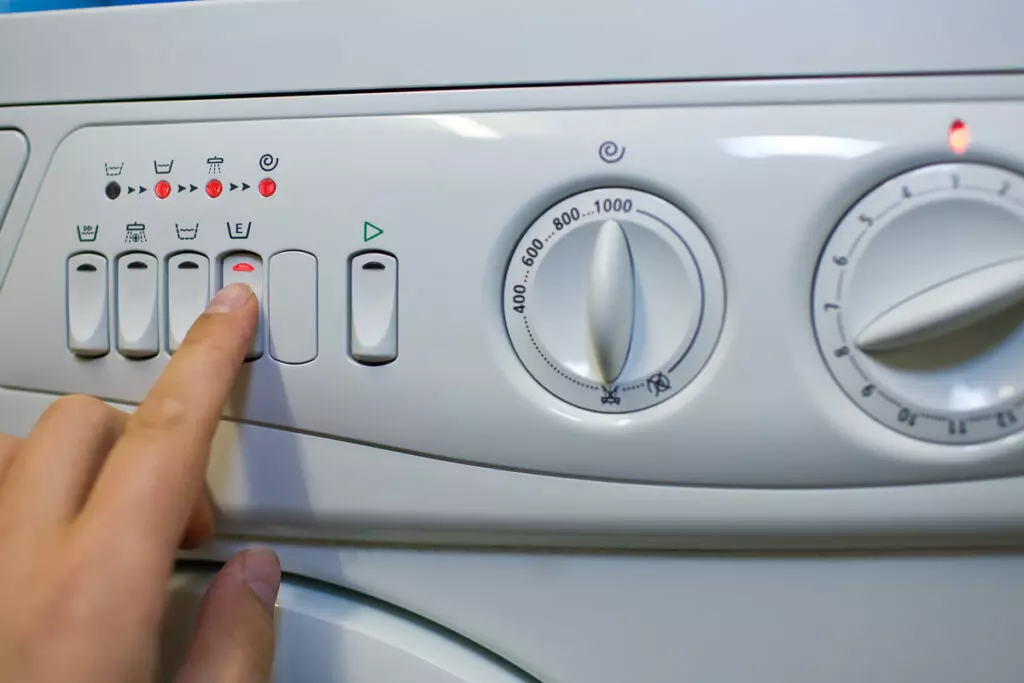How to Wash Pillowcases: Full Guide

Pillowcases can get dirty pretty quickly.
After all, they’re always in direct contact with our skin — meaning they’re subjected to skin and hair oils, perspiration, and bacteria.
If you notice greasy stains, yellowing, and odors, keep reading our guide to learn how to properly wash cotton, linen, and silk pillowcases.
Why Is It Important to Wash Pillowcases Regularly?
Even if you wash your hair and scrub your face before bed, you still produce sweat, sebum, and dead skin cells as you sleep. These are absorbed by your pillowcase, which will start to grow bacteria.
On top of that, dead skin cells mostly make up dust — which attracts dust mites that feed off those dead skin cells.
Effect of Dirty Pillowcases on Skin and Health
The bacteria that breed in your pillow covers can cause acne and pimples and can worsen skin conditions like eczema.
Then there are the dust mites. They don’t bite like bed bugs, but they carry more bacteria and can trigger asthma and allergic reactions.
Frequency of Washing Pillowcases
Depending on your lifestyle, you should wash your pillowcases once a week to every other day.
If you sweat a lot, suffer from skin conditions, or have sensitive skin, you should wash your pillowcases more frequently.
But if you have clear skin and don’t sweat a lot, you can do it once a week.
Deep cleaning is another issue. You should treat your pillowcases to a deep clean at least twice a year.
General cleaning involves just tossing the pillowcases in the machine or washing them by hand. Meanwhile, deep cleaning them involves taking the time to remove stains and odors.
Essential Items Needed to Wash Pillowcases
First, you should learn what to use before washing your pillowcases.
Detergent Selection
Any detergent will do — however, this depends on the fabric your pillowcases are made of.
For instance, silk pillowcases are delicate, so you’ll need a gentler detergent for them.
Dish detergent (particularly Dawn dish soap) will also help deep clean particularly grimy pillowcases.
Washing Machine Settings
Always look at the washing instructions that come with your pillowcases. But washing pillowcases is generally the same as washing bed linens.

Machine wash the pillowcases on a gentle cycle and use non-chlorine bleach only when needed. Then tumble dry it on medium heat.
Other Cleaners and Tools
Aside from the washing machine and the laundry detergent, you can use other tools to make washing pillowcases easier. These can include a laundry scrub board and white vinegar.
How to Wash Pillowcases
Washing pillowcases is easier than you think — in fact, you can generally get it done in less than an hour!
Simply follow the steps below.
Preparing Your Pillowcases for Washing
Look at the care label to know how you should wash the pillowcase.
If you notice light stains on your pillowcases, spot-clean them before tossing them in the wash. You can use a store-bought stain spot treatment and let it sit for a few minutes.
However, be careful when using enzyme-based detergents and spot removers. That’s because these products remove proteins. Over time, they may also break down the proteins in your pillowcase’s fibers.
As such, check if the products are safe for use on the type of pillowcase you have. For instance, look for products marketed as “silk wash” for silk pillowcases.
Alternatively, rub a bit of laundry detergent on the stain using an old toothbrush or rag.
If you need to deep clean them, follow the steps below:
- Fill your sink with hot water mixed with 1/4 cup of Dawn dish soap and 1 cup of baking soda. Fully submerge your pillowcases.
- Agitate each pillowcase by rubbing it against itself or using a scrub board.
- Drain the sink, then refill it with hot water and a few drops of dish soap. Let your pillowcases soak for a few hours.
- Rinse the pillowcases in hot water until the water runs clear.
Washing Pillowcases in a Machine
After you’ve rinsed your pillowcases, you can now toss them in the washing machine.
- Put the pillowcases through a hot wash and rinse cycle with your regular detergent and 2 cups of white vinegar.
- Run a second rinse cycle if your machine has one.
- Tumble or air dry.
NOTE: Don’t add fabric softener since it coats the pillowcases with wax or grease, which attracts hair oils and sticks to your skin.
Drying Your Pillowcases
You can tumble dry your pillowcases or put them on the drying rack.
Putting pillowcases in the clothes dryer for at least 15 minutes at a temperature of at least 130°F can kill dust mites and bacteria.
Special Care For Different Fabrics
Different fabrics will need special care for textile conservation. Silk pillowcases need more special care since they’re delicate.
Washing Silk Pillowcases
Silk items, like silk bedding and garments, are delicate.
However, they’ll only need dry cleaning if the care label explicitly says “Dry Clean Only.” This is normally for pillowcases with exceptionally delicate beading or decorative stitching.
Otherwise, you can wash a silk pillowcase by hand washing it, or putting it in a delicate cycle with cold water.
You can try whitening yellowed pillowcases by pre-soaking them in a mix of cool water and 1 tablespoon of vinegar. Never use bleach since chlorine can cause the silk to be more yellowed.
If you plan to hand wash silk pillowcases, don’t twist or wring them to remove excess moisture since silk fibers are weaker when wet.
If you wash them in the machine, stop the machine before the spin cycle, which can cause creases and wrinkles. Remember not to add fabric softeners.
If you’re air drying them, put the pillowcases on a drying rack, but keep them away from direct heat sources and sunlight.
You can tumble dry a silk pillowcase, but only on the lowest heat setting — and remove the pillowcases while they’re still slightly damp. Finish by letting them air dry.
Washing Linen Pillowcases
Linen pillowcases should ideally be cleaned with lukewarm water. You can use the warm-water setting if you want to machine wash it. However, cold water is okay if you’re concerned about shrinking.
If you hand wash linen, soak it in lukewarm water and mild detergent made specifically for delicate fabrics for 10 minutes. Don’t twist or wring it, similar to silk pillowcases.
Hang your pillowcase to dry once you’re done.
Washing Cotton Pillowcases
Cotton pillowcases are easy to wash. Just put them in warm water with detergent and scrub gently.
Or, toss it in the machine with warm water in a normal cycle.
However, if the pillowcase is bright or dark colored, it’s better to wash it with cool or cold water so the color doesn’t fade.
If the pillowcase gets wrinkled after washing, iron it before storing it or putting it back on the pillow.
Alternative Washing Methods
Machine washing your pillowcases is easy if you follow the right care instructions.
Here are some alternatives to using your washing machine.
Hand Washing Techniques
The main thing to remember when washing pillowcases is to gently agitate them by rubbing the fabric against itself after letting it soak in soapy water.
You can wring or twist cotton pillowcases since you’ll iron them later. However, avoid doing the same with linen and silk pillowcases since doing so can ruin the fabric.
Using Vinegar or Baking Soda
Vinegar is a natural disinfectant. It’s also slightly acidic, so it can melt away soapy residue, oil, and odors.
Put distilled white vinegar in a fabric softener dispenser and use the same amount as when you’d use fabric softeners.
Meanwhile, baking soda is a natural cleanser that soaks up dampness and odors.
Unique Cleaning Tips and Tricks
There are several cleaning tips you can use to make washing pillowcases easier.
For one, “pre-clean” them before tossing them in the wash. As outlined above, soak them in a cleaning solution and gently agitate the fabric.
It may take some time, but you’ll get used to washing your pillows correctly with enough practice.
Washing your pillowcase is a good start, but remember to properly clean the pillow itself, too. Your oily hair and skin may be in contact with the pillowcase, but the oil, sweat, and bacteria will also seep into the pillow.
Eventually, pillowcases will also serve as a barrier between you and the pillow — and they’ll only block so much.
As such, keeping your pillows clean makes it easier to keep your pillowcases clean too.
Frequently Asked Questions
Washing pillowcases is pretty simple. But if you have more questions about it, we’ve answered some of them below.
Can I Wash My Pillowcases in a Washing Machine?
Yes, you can wash your pillowcases in a washing machine. Just make sure to use the right machine setting according to the care label.
However, you might be better off hand-washing silk pillowcases, especially if you have a top-loading machine with an agitator. That’s because silk doesn’t do well when you constantly wash it by machine.
How Often Should I Wash My Pillowcases?
For regular cleaning, you should wash your pillowcases once a week if you don’t sweat a lot or don’t have sensitive skin.
If you have sensitive skin or produce a lot of sweat or oil, you should change pillowcases more often — maybe once every two days.
For deep cleaning, you should do so at least twice a year.
Can Washing Pillowcases in Hot Water Kill Germs More Efficiently?
Yes, washing pillowcases in hot water ensures you kill germs and dust mites. However, you shouldn’t use hot water on a linen or silk pillowcase.
If you’re worried about shrinking, use cool or cold water instead. Then, put the pillowcases in the dryer at a temperature of at least 130°F for at least 15 minutes. This can also kill germ and dust mites.
What Kind of Detergent Should I Use for My Pillowcases?
Ideally, You should use a mild detergent that’s free of dyes or perfumes (since these chemicals can stain your pillowcases).
If you’re worried about static cling, skip the fabric softener and dryer sheets. Instead, add white vinegar to the laundry.
Can I Use Vinegar or Baking Soda to Clean My Pillowcases?
Yes, both those household items are natural cleaners that can clean your pillowcases.
You can mix them with water to soak your pillowcases in or rub them directly on your pillowcases.
Conclusion
Pillowcases absorb sweat, oil, and saliva — which can be a breeding ground for bacteria. Dead skin cells will also attract dust mites, triggering allergies and asthma.
As such, regularly cleaning pillowcases is important to ensure you experience good sleep and sweet dreams.
You can hand wash your pillowcases or toss them in the washer. Regardless of how you choose to wash them, remember to always follow the care label so your pillowcases remain in top condition.
Written by
Maria DeSouza

Maria De Souza is a committed and accomplished entrepreneur in the cleaning industry, possessing an extraordinary blend of leadership, vision, and knowledge. As the proud owner of Onix Cleaning Services in Boston, Massachusetts, Maria has over two decades of experience in the industry, delivering unparalleled service and maintaining the highest standards of cleanliness.

